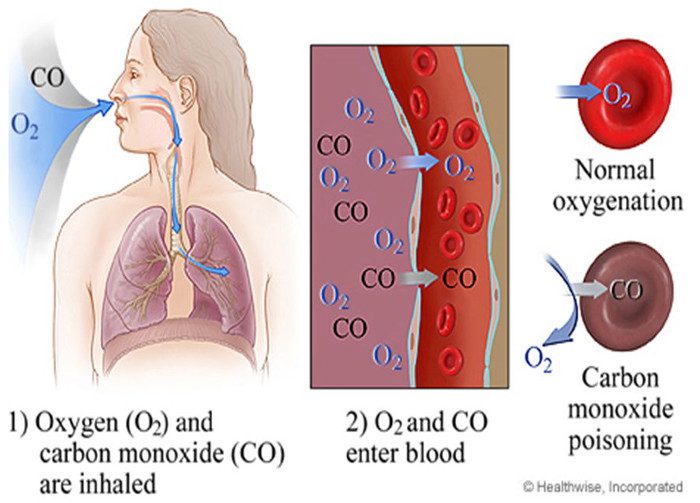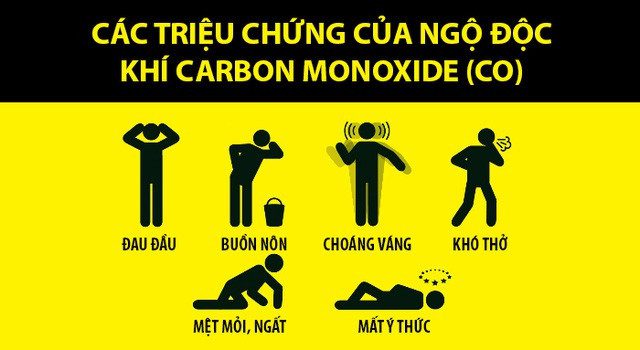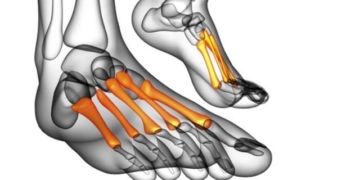No one could have imagined that this colorless, odorless gas could incapacitate humans so quickly!
As temperatures drop suddenly, many families purchase heaters or use dual-function air conditioners to keep warm. However, not everyone can afford these conveniences, especially those living in high mountainous areas where the economy is underdeveloped. Burning coal for heating is a way for them to cope with the harsh weather. Every year, there are cases of death or gas poisoning due to burning coal in enclosed spaces.
Dr. Le Hoan, Deputy Head of the Respiratory Endocrinology Department at Hanoi University of Medicine, states that burning charcoal or briquettes in poorly ventilated conditions produces CO2 and CO, two gases that are harmful to the body. Among these, CO is extremely toxic, colorless, and odorless, leading many people to be unaware of its presence until they begin to feel short of breath and then faint or lose consciousness while sleeping. Victims exposed to CO often suffer brain and heart damage; mild cases may experience respiratory illnesses like asthma, bronchitis, or pneumonia, while severe cases can be fatal.
The question arises, can burning coal gas be deadly?
Regrettably, the answer is yes. It is important to know that burning charcoal in insufficient air creates a highly toxic gas known as carbon monoxide (CO).

Coal emits a large amount of CO – the silent killer.
Victims inhaling this gas can suffer severe consequences, including death, or, in less severe cases, lasting neurological and psychological effects.
How does CO (carbon monoxide) kill?
It’s essential to clarify that carbon monoxide (CO) is a colorless, odorless gas released from fuels like charcoal, propane, methane, or partially combusted petroleum.

When the body inhales this gas, it enters the lungs and then the bloodstream, where CO binds with hemoglobin (red blood cells) to form carboxyhemoglobin (HbCO).
This substance inhibits the release of oxygen in cells, reducing the blood’s ability to transport oxygen, leading to oxygen deprivation.
When hemoglobin is depleted of oxygen, the body also runs out of oxygen. Additionally, CO can bind with myoglobin (the pigment in muscle) causing cellular damage and creating an acidic metabolic environment.
Because it is a colorless, odorless gas that does not cause irritation, victims often have difficulty detecting its presence in the air.
Only when victims start to feel “abnormal” do they find themselves unable to move their limbs, slip into a coma, and ultimately face death. This is because CO gradually infiltrates the body, causing a decrease in blood oxygen levels across all organs.
The organs that require more oxygen, such as the brain and heart, are at greater risk.
Symptoms of CO poisoning

The symptoms of CO poisoning typically begin with headaches, nausea, dizziness, and shortness of breath, gradually leading to unconsciousness.
In more severe cases, victims may experience chest tightness, blurred vision, difficulty breathing, and rapid pulse… the lungs seem to be suffocating, no longer functioning.
At this stage, victims may experience seizures, loss of consciousness, permanent brain damage, cardiac arrest, and death.
According to scientific research data, even in the mildest cases of CO poisoning, nearly 50% of victims will face complications relating to mental health, neurological issues, and brain damage later on. The mildest effects may include varying degrees of memory loss, and in severe cases, complete coma or memory loss.
Therefore, Dr. Nguyen Trung Nguyen, Director of the Poison Control Center at Bach Mai Hospital, advises the public: Absolutely do not burn fuels such as charcoal briquettes, wood, or gas in enclosed spaces. If it is absolutely necessary to use them, make sure to keep doors open for adequate air circulation. The best option is to choose alternative heating methods.
Another issue is that the structure of many homes today poses significant ventilation problems; most are self-built and designed to be airtight without a proper ventilation system, or at the very least, there are no openings to allow air to flow in and out.
What to do if you suspect someone is suffering from CO gas poisoning?
If you suspect someone is suffering from CO poisoning, immediately move the patient out of the area or open all doors to let fresh air into the house—take every possible measure to remove the patient from exposure to CO.
If the patient has only mild symptoms, they will likely recover quickly and regain consciousness. However, in more severe cases, artificial respiration should be initiated, and the patient must be taken to the emergency room promptly.
The person administering first aid should also call for additional help, in case they are affected by the toxic gas.
Oxygen is considered an “antidote” for CO poisoning cases. Therefore, during first aid, family members should provide the patient with oxygen via a mask immediately. If the patient experiences respiratory or cardiac arrest, we must perform resuscitation and quickly transport them to the nearest medical facility.
Dr. Nguyen Khanh Duong from the Emergency Department at Ho Chi Minh City University of Medicine and Pharmacy advises the public not to use charcoal stoves for heating in bedrooms, nor to sleep in garages with running vehicles or generators in enclosed areas (basements, under stairs) to avoid CO poisoning incidents.
Heating with coal is even more dangerous for the elderly and young children, whose respiratory systems are weaker and whose immune defenses are lower. Placing coal indoors for heating can also lead to fire hazards or severe burns. Therefore, everyone should minimize the use of coal for heating, especially in households with postpartum women and young children.
If you frequently need to use a charcoal stove for cooking, position the stove in a well-ventilated area. Do not place charcoal stoves in bedrooms or enclosed spaces. Do not burn overnight. Use heating lamps or dual-function air conditioners to maintain room temperature. Keep the room temperature between 25-28 degrees Celsius, ensuring ventilation but avoiding drafts. Do not let the room temperature become too warm, as it can cause burns to infants or shock when going outside into the cold, increasing the risk of numbness, poor blood circulation, and even hypothermia or stroke.


















































